Qualcomm Mobile Processors | Exynos Mobile Processors
Mobile Processors, also known as system-on-chip (SoC), are the processors used in mobile devices such as smartphones and tablets. They are designed to be power-efficient and optimized for mobile applications.
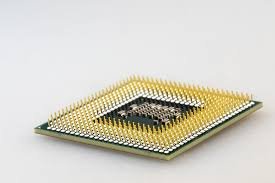
Buy Samsung Galaxy J7 NXT 3GB Gold
Mobile Processors typically have multiple cores, ranging from dual-core to octa-core, which allow for efficient multitasking and faster performance. They also integrate other components such as graphics processing units (GPUs), memory controllers, and radios for wireless communication.
Mobile Processors also have built-in security features such as hardware-based encryption and secure boot capabilities to protect sensitive data. Overall, mobile processors are critical components of modern mobile devices, and advancements in mobile processor technology have enabled new and innovative features and capabilities in mobile computing.
Here are some of the Mobile Processor Types:
1. Qualcomm Snapdragon:
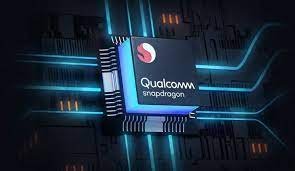
Qualcomm Snapdragon is a family of mobile processors designed by Qualcomm Technologies. These processors are used in a wide range of mobile devices, including mobile phones, smartphones, tablets, and smartwatches. Snapdragon processors are known for their high-performance computing capabilities and power efficiency. They integrate multiple cores, advanced graphics processing units (GPUs), and other components such as memory
controllers and wireless radios.
Advantages of Qualcomm Snapdragon:
a.) High-performance computing capabilities
b.) Power efficiency for longer battery life.
c.) Support for 5G connectivity for high-speed internet access.
d.) Advanced camera and AI processing capabilities.
e.) Customizable configurations to optimize performance for specific device needs.
Disadvantages of Qualcomm Snapdragon:
i.) High cost compared to other mobile processors.
ii.) Limited compatibility with certain operating systems or software.
iii.) May not have as much brand recognition as other processors such as Apple’s
A-series.
iv.) Can have heat generation issues when used in high-performance devices.
Conclusion:
Overall, Snapdragon processors have become a popular choice for mobile devices, and their advancements in mobile processing technology have enabled new and “innovative features” and capabilities in mobile computing.
2. Exynos:
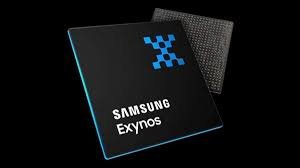
Exynos is a brand name for a line of system-on-chips (SoCs) developed by Samsung Electronics for use in their mobile devices, such as smartphones and tablets. The Exynos SoCs are designed to deliver high performance and efficiency and typically incorporate a combination of CPU, GPU, and other processing units.
Exynos chips have been used in various Samsung mobile devices, such as the Galaxy S and Note series, and have been praised for their power efficiency and strong processing capabilities. However, they have also faced criticism for being less powerful than their Qualcomm Snapdragon counterparts, which are used in some regions.
Samsung is continually improving and upgrading its Exynos processors, with the latest models featuring advanced technologies like 5G connectivity, AI acceleration, and improved power management.
Advantages of Exynos:
a.) Good power efficiency: Exynos processors are known for their power efficiency, which can help extend battery life in mobile devices.
b.) High-performance graphics: The Exynos SoCs typically include a strong GPU, which can provide excellent graphics performance for gaming and other demanding applications.
c.) Advanced features: Samsung is continually improving and upgrading its Exynos processors with advanced features, such as 5G connectivity, “AI acceleration”, and improved power management.
Disadvantages of Exynos:
i.) Inferior performance compared to Snapdragon: In some regions, Samsung devices use Snapdragon SoCs instead of Exynos, as the Snapdragon is considered more powerful and efficient in some cases.
ii.) Limited availability: Exynos processors are primarily used in Samsung devices,
which can limit their availability to other smartphone manufacturers.
iii.) Limited developer support: Due to their limited availability, Exynos processors
may have less support from third-party developers compared to more widely used
SoCs.
Conclusion:
In conclusion, Exynos is a brand name for a line of system-on-chips (SoCs) developed by *Samsung* Electronics for use in their mobile devices. Exynos processors offer good power efficiency, high-performance graphics, and advanced features such as 5G connectivity and AI acceleration.
However, *Exynos processors* may have inferior performance compared to other SoCs, limited availability, and less support from third-party developers. Overall, Exynos processors are a solid choice for Samsung devices but may not be the best option for all users depending on their needs and preferences.
3. Apple A13 Bionic:
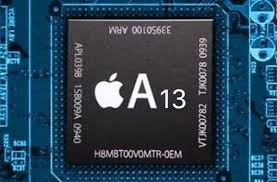
The Apple A13 Bionic is a *7-nanometer* system-on-a-chip (SoC) developed by Apple Inc. It is the processor used in the iPhone 11, iPhone 11 Pro, and iPhone 11 Pro Max. The A13 Bionic features a *six-core CPU*, a four-core GPU, and a neural engine capable of performing up to 6 trillion operations per second.
It also includes advanced machine learning capabilities, which allow for improved photography, augmented reality, and other AI-driven applications. The A13 Bionic is also
optimized for energy efficiency, delivering longer battery life compared to previous
generations of Apple processors.
It is capable of handling high-performance tasks such as gaming, video editing, and
*multitasking* with ease, and has been praised for its speed and responsiveness. Overall, the Apple A13 Bionic is a highly capable and efficient processor that delivers exceptional performance and advanced AI capabilities for the iPhone 11 series.
Advantages of Apple A13 Bionic:
a.) Exceptional performance: The A13 Bionic is one of the fastest mobile processors available and can handle demanding tasks such as gaming and video editing with ease.
b.) Advanced AI capabilities: The neural engine of the A13 Bionic allows for improved machine learning performance and advanced AI-driven features such as improved photography and augmented reality applications.
c.) Energy efficiency: The A13 Bionic is optimized for energy efficiency, which helps *extend battery life* and improve overall device performance.
Disadvantages of Apple A13 Bionic:
i.) Limited availability: The A13 Bionic is only available in the iPhone 11 series, which limits its availability to users who do not own an iPhone 11.
ii.)Closed ecosystem: Apple’s iOS operating system is a closed ecosystem, which can limit customization options and may not be suitable for users who prefer more flexibility in their device usage.
iii.) High cost: The iPhone 11 series with A13 Bionic is relatively expensive compared to some other smartphones on the market, which may not be suitable for all users.
Conclusion:
The Apple A13 Bionic is a highly capable and *efficient processor* that delivers exceptional performance and advanced AI capabilities for the iPhone 11 series. However, its limited availability, closed ecosystem, and high cost may not be suitable for all users depending on their needs and preferences.
4. Apple A14 Bionic:
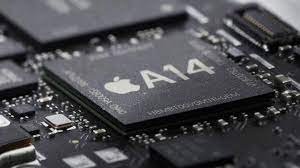
The Apple A14 Bionic is a 5-nanometer system-on-a-chip (SoC) developed by Apple Inc. It is the processor used in the iPhone 12, iPhone 12 mini, iPhone 12 Pro, and iPhone 12 Pro Max. The A14 Bionic features a six-core CPU, a four-core GPU, and a *16-core neural engine* capable of performing up to 11 trillion operations per second.
The A14 Bionic also includes advanced machine learning capabilities, which allow for improved photography, augmented reality, and other AI-driven applications. It also supports 5G connectivity for faster internet speeds and improved performance. The A14 Bionic is also optimized for energy efficiency, delivering longer battery life compared to previous generations of Apple processors.
The A14 Bionic is capable of handling high-performance tasks such as gaming, video editing, and *multitasking* with ease and has been praised for its speed, responsiveness, and improved energy efficiency.
Advantages of Apple A14 Bionic:
a.) Exceptional performance: The A14 Bionic is one of the fastest mobile processors available and can handle demanding tasks such as gaming and *video editing* with ease.
b.) Advanced AI capabilities: The 16-core neural engine of the A14 Bionic allows for improved machine learning performance and advanced AI-driven features such as improved photography and augmented reality applications.
c.) Energy efficiency: The A14 Bionic is optimized for energy efficiency, which helps extend battery life and improve overall device performance.
d.)5G support: The A14 Bionic supports 5G connectivity for faster internet speeds and improved overall device performance.
Disadvantages of Apple A14 Bionic:
i.) Limited availability: The A14 Bionic is only available in the iPhone 12 series, which limits its availability to users who do not own an iPhone 12.
ii.) Closed ecosystem: Apple’s iOS operating system is a closed ecosystem, which can limit customization options and may not be suitable for users who prefer more flexibility in their device usage.
iii.) Expensive: The iPhone 12 series with A14 Bionic is relatively high cost or expensive compared to some other smartphones on the market, which may not be suitable for all users.
Conclusion:
The Apple A14 Bionic is a highly capable and efficient processor that delivers exceptional performance and advanced AI capabilities for the iPhone 12 series. However, its limited availability, closed ecosystem, and high cost may not be suitable for all users depending on their needs and preferences.
6. Dimensity 9200:
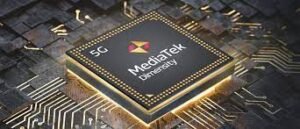
Buy (Renewed) Samsung Galaxy M01 Core
The Density 9200 is a *mobile processor* (system-on-chip) developed by MediaTek, a Taiwanese semiconductor company. It is based on a 6nm manufacturing process and features an octa-core CPU with a tri-cluster architecture that includes four high-performance Arm Cortex-A78 cores running at up to 3.0GHz, two power-efficient Cortex-A76 cores running at up to 2.4GHz, and two Cortex-A55 cores running at up to 2.0GHz.
The Dimensity 9200 also includes an Arm Mali-G77 MC9 GPU, which provides high-end graphics capabilities for mobile gaming and other graphics-intensive applications. It also supports up to 16GB of LPDDR5 RAM and UFS 3.1 storage, as well as 5G connectivity with support for both sub-6GHz and mmWave frequencies.
Advantages of Dimensity 9200:
a.) High-performance octa-core CPU with tri-cluster architecture.
b.) Advanced GPU for graphics-intensive applications and gaming.
c.) Supports up to 16GB of *LPDDR5* RAM and UFS 3.1 storage.
d.) 5G connectivity with support for sub-6GHz and mmWave frequencies.
e.) Low power consumption due to its *6nm* manufacturing process.
f.) Supports advanced camera features, including up to 108MP cameras and
4K HDR video recording.
Disadvantages of Dimensity 9200:
i.) Availability may be limited to specific markets or manufacturers.
ii.) May not be as widely supported by third-party developers as other mobile
processors.
iii.) Some users may prefer processors from more well-known brands, such as
Qualcomm or Apple
iv.) Battery life may vary depending on usage and other factors, despite its low
power consumption.
Conclusion:
The Dimensity 9200 is a powerful and advanced mobile processor developed by MediaTek. Its high-performance CPU and GPU, 5G connectivity, and support for advanced camera features make it an attractive option for flagship smartphones and other mobile devices.
However, its limited availability and potential lack of third-party developer support may be drawbacks for some users, and battery life may vary depending on usage. Overall, the Dimensity 9200 offers a competitive option in the high-end mobile processor market.
FAQ:
Q.1) Is Exynos processor good or bad?
Ans: It depends on the specific model and use case. Some Exynos processors, such as the *Exynos 2100*, offer high performance and advanced features for flagship smartphones.
However, other models may not be as competitive compared to processors from other manufacturers, such as Qualcomm or Apple. Overall, it is important to consider the specific features and performance of a particular Exynos processor before determining whether it is good or bad.
Q.2) What is the next Exynos processor?
Ans: the next processor could be a 2025-bound Exynos nine-core monster with up to four Cortex-X cores.
Q.3) What is the speed of the Qualcomm processor?
Ans: Qualcomm processor has to speed up to 450 Mbps.
Q.4) What is the Speciality of the Snapdragon processor?
Ans: The Snapdragon processor is known for its high-performance capabilities, power efficiency, and advanced features, such as support for 5G connectivity, AI processing, and advanced camera features.
Q.5) How long will A13 chip last?
Ans: It is difficult to predict exactly how long the A13 chip will last, as it depends on various factors such as usage, software updates, and technological advancements.
However, Apple typically provides software updates for their devices for around 5-6 years after their release, so it is likely that devices using the A13 chip, such as the iPhone 11 series, will continue to receive updates and remain functional for several years.
Q.6) Is the A13 bionic chip slow?
Ans: No, the A13 Bionic chip is not slow. In fact, it is one of the most powerful and efficient mobile processors available and is capable of handling demanding tasks such as gaming, video editing, and augmented reality applications with ease.
Amd mobile processors, intel mobile processors, intel 11th gen mobile processors, amd ryzen 5000 series mobile processors,ryzen 5000 mobile processors, mobile processors ranking.
Thanks For Reading On Our Blog, Keep Visiting To Get Updates.
Know About These Mobiles Also…
Google Pixel 7A Review | Vivo V27 Pro | Realme 10 Pro Plus | Realme Narzo 50i Prime
BEST MOBILE PHONES AT A REASONABLE PRICE.
OnePlus 9R
OnePlus 9 Pro Morning Mist
OnePlus Nord N200 5G
iQOO 7 5G
iQOO Neo 6 5Ghttps://amzn.to/3XBWcHp
iQOO 9 SE 5G
(Renewed) iQOO 7 Legend 5G
